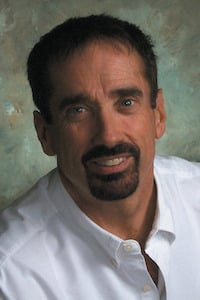Challenging Us To Admit How Little We Know
Queer Religiosities: An Introduction to Queer and Transgender Studies in Religion, by award-winning scholar and teacher Melissa M. Wilcox, would make an excellent textbook in an “introductory” course in which I’d like to enroll. And it was especially written for use in such a course, including its lists of teaching resources, an extensive bibliography for further reading, and study questions.
But most of that above compliment is actually too misleading. Even as someone who is a professor of the history of religions and has taught around and about the subject, there was so much in this “introductory” book that I learned. Chapter after chapter is encyclopedic in the best sense of that word.
And even though the book is meant to be a text, pointing that out is apt to turn off readers who haven’t the best memories of required readings in courses they’ve taken. Wilcox takes the complicated discussions of queer, transgender, and religious studies and makes this book one that anyone who claims to know, wants to understand, or just has an inkling about these fields, but really wants to know about their intersection, will find engaging.
Professor Wilcox is clear that she will not make the mistakes many others make when they talk about religions in a global perspective. Thankfully, though the book analyzes cases from mostly contemporary religions around the globe, she rejects the common but deceptively ahistorical approach that talks about “What Hinduism says.” “What Christianity says,” “What Islam says,” etc.
Historically these “isms’ say and do nothing. As careful historians, including myself, have pointed out, only people, texts, and institutions say things.
To look at it otherwise is to pre-decide the important question: who speaks for a religion. Thinking in terms of things called “religion” and “religions” and what are often included when even scholars settle on these popular, actually lazy, “great religions” categories, amounts to affirming a specific position (usually of those with the most power) that is only one of all those affirmed by real people who consider themselves a part of the category. It promotes misunderstanding and confusion when one meets someone who identifies with the category as well as prioritizing the view of those who have the power and privilege to define them.
This realization opens up the study of religion beyond the old “world religions” categorization that was used to promote a “multiculturalism” that feels nice and liberal but downplays and sidelines what people without power (women, non-dominant races in a culture, queer people) believe and do. It means we can ask about the religiousness of India’s Hijra, the Radical Fairies, the Sisters of Perpetual Indulgence, or “Indecent Theology” – and she does.
It calls us to dump our old ideas of religiosity to practice verstehen, empathetic understanding, when we consider indigenous, non-dominant, and even what we might consider ridiculous beliefs, practices, and communities that are different from those we like. It challenges us to start over with the uncomfortable thought that “there is no objectively, provable, preexisting, universal human nature or experience called ‘womanhood,’ ‘manhood,’ ‘heterosexuality,’ ‘gayness,’ ‘transgenderness,’ or ‘religion.’”
It’s refreshing then to see her asking questions that “queer” approaches have asked, and all historical approaches should ask: “Who and what are religious? Who gets to say? What are the consequences of someone else defining you into or out of religion, spirituality, traditions and lifeways?”
The history of queer studies and queer theory in the academy is mostly unknown to those outside university-level research, unfortunately. And that’s often because the scholars involved use specialized jargon in a way that makes a field of study insular.
Few outsiders have heard that it’s an approach that’s meant to disrupt and transcend the norms, including those of “lesbian and gay studies.” And that lack of familiarity is too bad.
“Queer” means in this setting the challenging of all power structures and their approaches – as this book does: “queer theory seeks to both expose and unsettle normative models of sexuality and, in its best, most intersectional forms, many other channels or axes of power.” As such, there remains no place for unexamined racism, classism, or isms of any kind, even the religious “isms” we so often throw around.
So this book (organized by six themes such as “stories” and “politics and power”) will catch anyone up on the history, questions, answers, and implications when queer studies meets transgender studies, and both intersect with religious studies. But, as the author says: “the goal of this book is to leave readers not with all their questions answered but with all their answers questioned.”
It’s recommended – study it.
Melissa M. Wilcox, Queer Religiosities: An Introduction to Queer and Transgender Studies in Religion. New York: Rowman & Littlefield, 2020. Paperback: $32.00

Professor Emeritus of Religious Studies at the University of Kansas where he taught for 33 years and was department chair for six years, Robert N. Minor (he/him), M.A., Ph.D is the author of 8 books as well as numerous articles and contributions to edited volumes. He is an historian of religion with specialties in Biblical studies, Asian religions, religion and gender and religion and sexuality. His writing has been published in Whosoever since 2005 and he continues to speak and lead workshops around the country. In 1999 GLAAD awarded him its Leadership Award for Education, in 2012 the University of Kansas named him one of the University’s Men of Merit, in 2015 the American Men’s Studies Association gave him the Lifetime Membership Award, and in 2018 Missouri Jobs with Justice presented him with the Worker’s Rights Board Leadership Award. He resides in Kansas City, Missouri and is founder of The Fairness Project.
